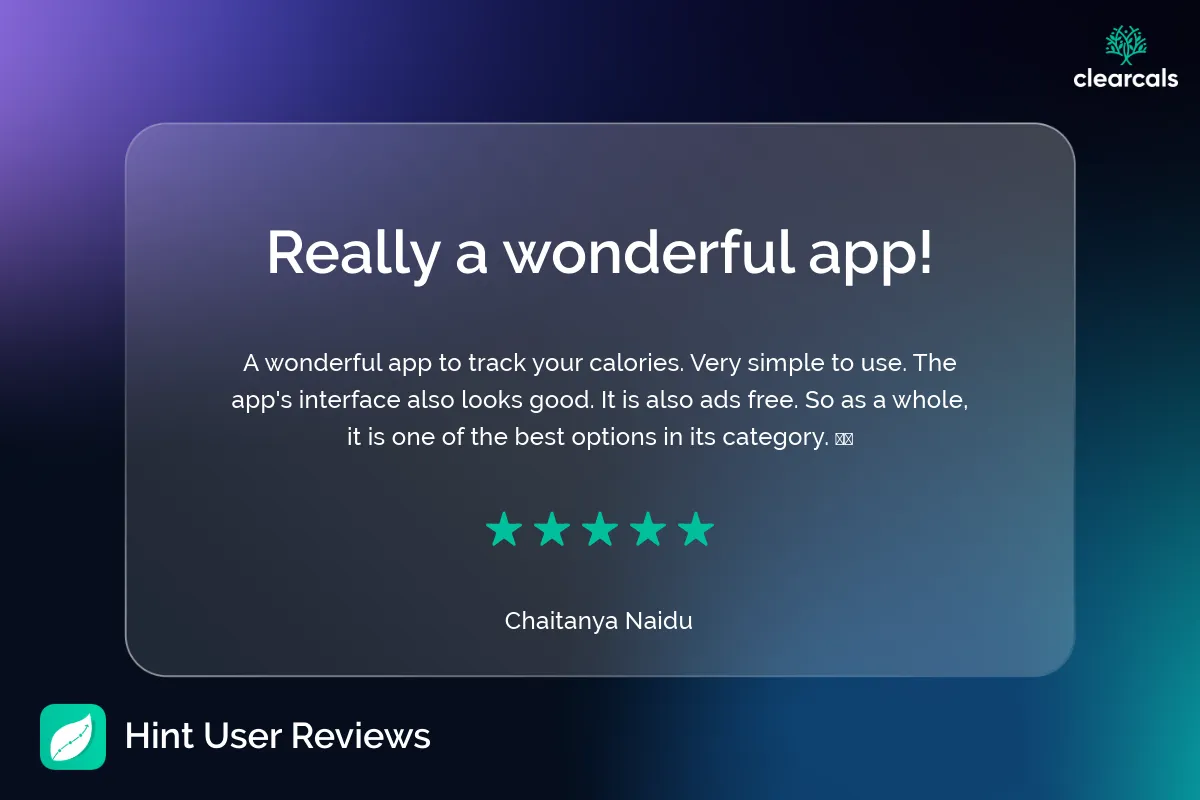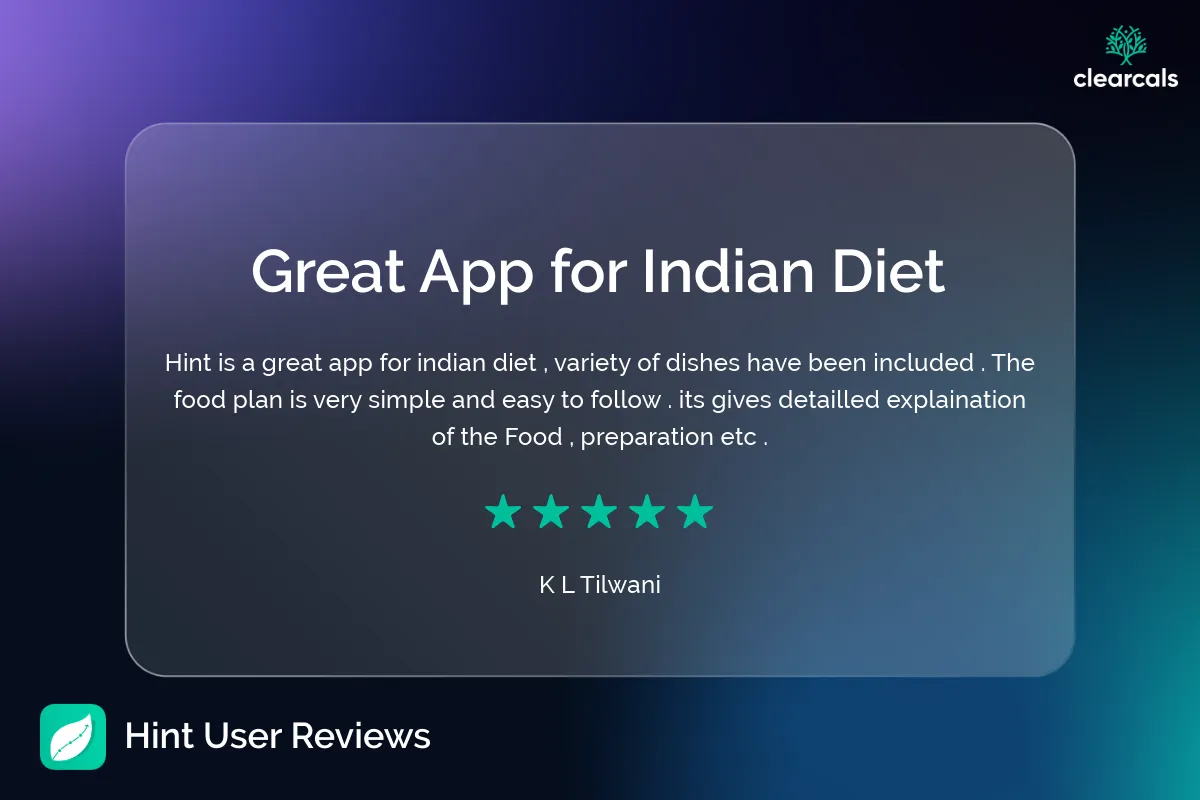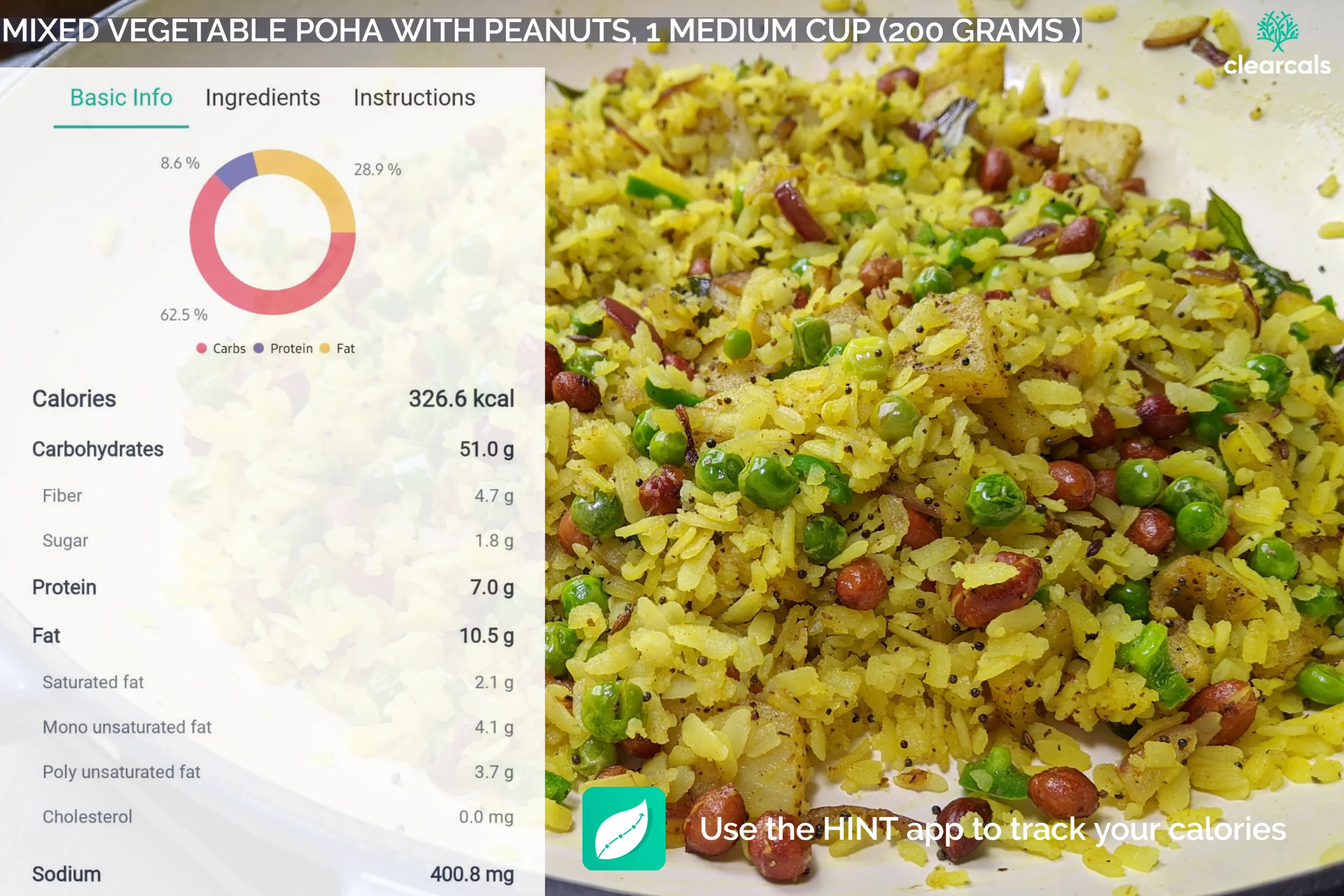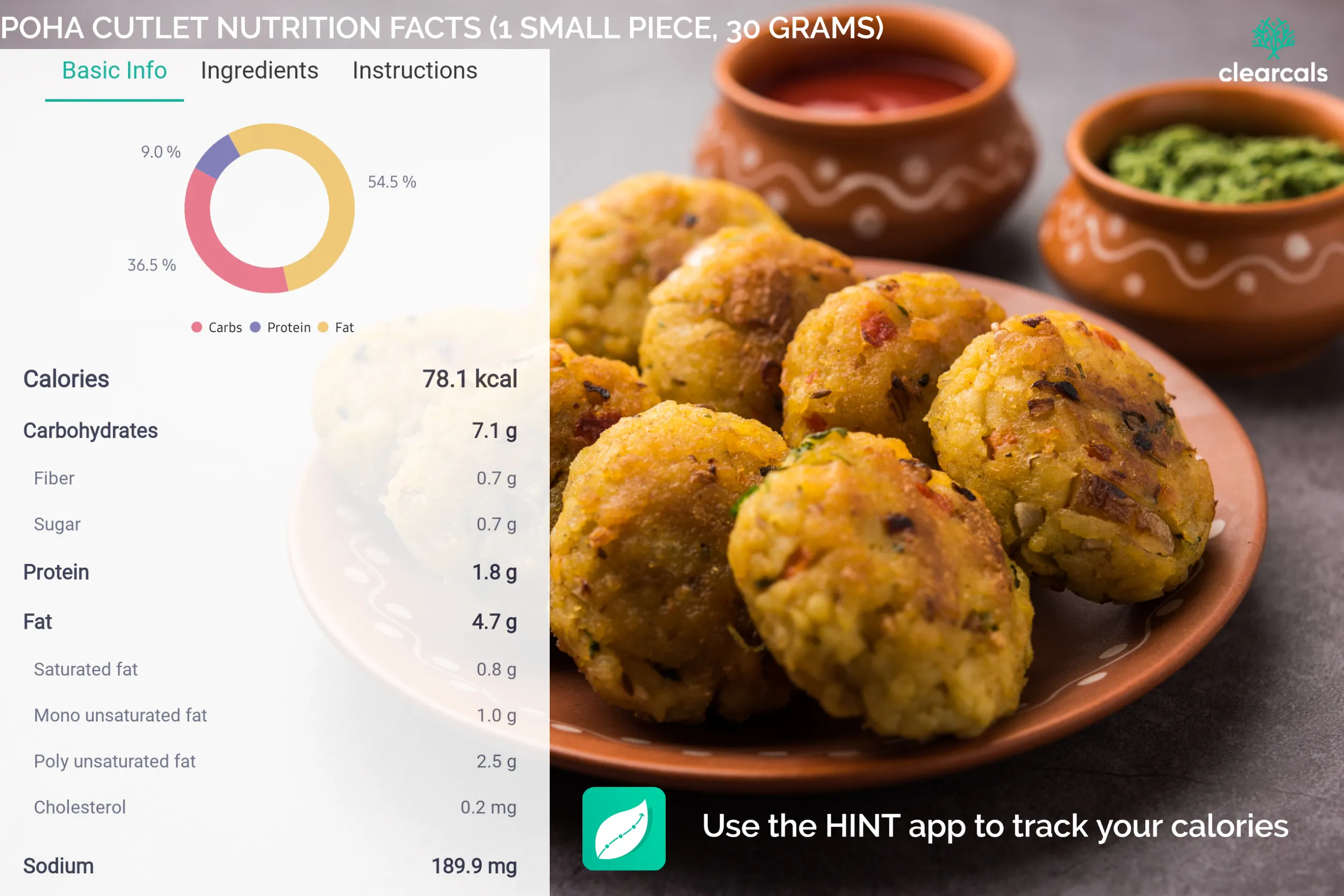Looking for a Personalized Diet Plan?
Poha Calories, Nutrition Facts & Health Benefits

By Asfia Fatima, Chief Dietitian at Clearcals
TLDR
- A medium cup (200 grams) of poha contains 273 calories.
- The caloric content of poha varies depending on the serving size and the recipe.
- Poha is rich in dietary fiber, protein, and essential micronutrients, making it a nutritious choice.
- Individuals with chronic health conditions can also benefit from including poha in their diet.
How many calories are in one cup or bowl of poha?
Poha is a versatile dish that fits into various diets, whether you're aiming to lose weight, manage a chronic condition, or simply enjoy a nutritious meal.
A medium cup of poha contains approximately 273 calories, but this can vary based on the serving size. Here’s a quick look at how the calories scale with the quantity:
| Quantity (in grams) | Poha Calories (kcal) |
|---|---|
| 1 Small cup/ bowl(100 grams) | 136 |
| 1 Medium cup/ bowl(200 grams) | 273 |
| 1 Large cup/ bowl (300 grams) | 409 |
For precise tracking of your caloric intake, the Hint app offers a seamless way to log your meals, including poha. This feature is particularly beneficial for those on specific diet plans, such as weight loss or muscle gain.

How many calories are in 1 plate poha?
Calories in a plate of poha also depend on the size of the plate and the quantity of poha. Here is a table of how calories increase with the quantity of poha.
| Quantity (in grams) | Poha Calories per plate (kcal) |
|---|---|
| 1 Small plate (100 grams) | 136 |
| 1 Medium plate (200 grams) | 273 |
| 1 Large cup plate (300 grams) | 409 |
Poha nutrition facts
Beyond just calories, poha is packed with nutrients. It is a good source of dietary fiber, protein, iron, lutein, phosphorus, magnesium, copper, and pantothenic acid, and an excellent source of vitamin C, vitamin D, manganese, and vitamin E.
Poha contains 64% carbohydrates, 8% protein, and 28% fat, making it a balanced meal option.
For those who want to dive deeper into the nutritional content of their meals, the Hint Pro subscription offers advanced features like detailed macro and micronutrient tracking, allowing you to optimize your diet according to your specific goals.
Watch: How to Track Poha Calories on the Hint App
Poha Calories Depend on Ingredients and Preparation Style
The calories and nutritional content of poha can vary significantly depending on your recipe, the type of poha used, and the quantity of ingredients, especially water and oil.
Here’s what makes a difference:
- The type of poha (thin, medium, or thick flakes) affects the weight and texture after cooking
- The amount of oil or ghee used for tempering increases the fat and calorie content
- Ingredients like peanuts, potatoes, coconut, or sugar can significantly increase calories
- The amount of water used while soaking or steaming poha affects the final volume and calorie density per 100 grams
A lightly cooked vegetable poha with minimal oil is lower in calories and higher in fiber, while a richer version with more oil and nuts is more calorie-dense.
Note: The calorie values provided in this blog and in the Hint nutrition database are based on commonly used poha recipes. Actual values may vary widely based on your preparation method and ingredients.
**Want to know how many calories are in your homemade poha?**
Download the Hint app and use the “Create Your Recipe” feature to log ingredients, adjust quantities, and get a personalized calorie and nutrition breakdown.
For more insights on how calories vary in Indian meals, check out our Indian Food Calorie Calculator blog.
Frequently Asked Questions (FAQs)
Is poha a carb or protein?
Poha is primarily a carbohydrate-rich food. Made from flattened rice, poha is high in complex carbs that provide quick energy. It contains a small amount of protein and is naturally low in fat, making it a light and digestible option.
You can improve its nutritional profile by:
- Adding vegetables (like peas, carrots, or onions)
- Including peanuts or roasted chana for healthy fats and plant-based protein
- Serving it with curd or a boiled egg for added protein
Use the Hint app’s “Create Your Recipe” feature to check the exact carb-protein breakdown of your poha preparation.
Can I eat poha every day?
Yes, poha can be eaten daily as part of a balanced diet. It’s light, easy to digest, and low in fat, especially when cooked with minimal oil and loaded with vegetables.
For daily consumption:
- Use less oil or ghee
- Avoid high-calorie add-ons like fried peanuts or potatoes
- Try variations like vegetable poha, sprouted moong poha, or brown rice poha for better fiber and protein
Track your customized poha recipes and daily calorie intake with the Hint app.
Is Poha Healthy?
Yes, poha is considered a healthy food option. It is low in calories, rich in essential nutrients like iron, and easy to digest. It also contains probiotics from the fermentation of rice flakes, which support gut health.
For those looking to maintain or improve their health, incorporating poha into their diet can be a smart choice. The Hint app helps you monitor how this healthy food fits into your daily nutritional goals.
Is Poha good for weight loss?
Yes, poha can be an excellent addition to a weight-loss diet. It is low in calories. It has 64% of carbohydrates present in it, along with 27% of fat— such a combination makes the thing a good fit to be consumed for weight loss.
Adding vegetables to poha can increase its fiber content, further supporting weight loss efforts.
Want to explore more weight loss tips? The Hint Premium subscription provides access to personalized diet plans and expert advice tailored to your needs.
Poha Glycemic Index
Poha has a low glycemic index (GI) of 43, making it a good option for those who need to manage their blood sugar levels, such as people with diabetes.
A low GI indicates that poha causes a slower, more gradual rise in blood sugar, which is beneficial for maintaining steady energy levels.
With the Hint Pro subscription, you can receive personalized meal recommendations that align with your glycemic control needs.
Is Poha good for diabetes?
Yes, poha is suitable for people with diabetes due to its low glycemic index. It provides a slow release of glucose into the bloodstream, helping to manage blood sugar levels effectively.1
The Hint app offers diabetes-friendly diet plans, ensuring that your meals are both nutritious and supportive of your health goals.
Does Poha Increase Sugar Level?
Due to its low glycemic index, poha does not cause a rapid spike in blood sugar levels, making it a good option for those looking to maintain steady blood glucose levels.
The Hint app helps you keep track of your meals and their impact on your blood sugar, allowing for better management of your dietary choices.
Does Poha Increase Weight?
Poha can contribute to weight gain if consumed in large quantities, as it contains a good amount of carbohydrates and calories.
However, when eaten in moderation and as part of a balanced diet, poha can be included in weight management plans.
For those looking to gain weight healthily, the Hint Pro subscription offers meal planning tools to help you achieve your goals.

Poha vs. Rice
Poha and rice are both staples in Indian cuisine, but they differ in their nutritional profiles.
Poha is easier to digest, has a lower glycemic index, and is quicker to prepare than rice. However, rice, especially brown rice, offers more fiber and can be more filling.
The Hint app can help you decide when to choose poha over rice depending on your dietary needs and goals.
Is Poha Gluten-Free?
Yes, poha is naturally gluten-free, making it a safe choice for individuals with celiac disease or gluten sensitivity.
The Hint app provides a wide range of gluten-free recipes, including different varieties of poha, to ensure that you can enjoy diverse and nutritious meals without worrying about gluten.
Does Poha Cause Gas?
Poha is generally easy to digest and does not typically cause gas.
However, some individuals might experience bloating or gas if poha is consumed in large quantities or paired with certain ingredients.
The Hint app allows you to track your food intake and monitor any digestive issues, helping you identify foods that may cause discomfort.
Poha During Pregnancy
Poha is a good choice during pregnancy as it is rich in iron and essential vitamins, and easy to digest. It can help meet the increased nutritional needs during pregnancy while being gentle on the stomach.
With the Hint Premium subscription, expectant mothers can consult a qualified dietitian and receive personalized diet plans to ensure they’re getting the nutrients they need.
Is Poha good for blood pressure?
Rice flakes are a good source of potassium ,which is beneficial for hypertension. Also, it has low sodium content, which actively helps in normalizing blood pressure levels.
Disadvantages of Eating Poha
While poha is generally healthy, there are a few considerations to keep in mind. Poha is relatively low in protein, so it’s important to pair it with protein-rich foods to make a balanced meal.
Additionally, commercially prepared poha recipes might be high in sodium, which could be a concern for individuals managing blood pressure.
The Hint app allows you to modify recipes and track sodium intake, helping you avoid potential pitfalls.
Is Poha good for PCOS?
Women suffering from PCOS are insulin-resistant. Hence, they should follow a diet rich in fiber and low in carbs. Poha is a healthy breakfast option. And it can be made healthier by adding vegetables to increase the fiber content.
Is Poha good for the thyroid?
A bowl of poha has fiber, vitamins, and healthy fats. It is low in cholesterol and calories, making it a healthy meal and helping you have a balanced diet. Including varieties of poha recipes rich in fiber and selenium in your diet can help improve your thyroid function.
Is Poha good for immunity?
Poha is a good source of dietary fiber, protein, iron, lutein, phosphorus, magnesium, copper, pantothenic acid, vitamin C, vitamin D, manganese, and vitamin E. These nutrients play an essential role in boosting immunity. Also, it is a good probiotic food.
To learn more about how these nutrients effectively boost immunity, we recommend reading our blog on supporting your immunity through nutrition.
Is Poha good for muscle gain?
For muscle gain, we recommend eating more protein-rich foods along with poha.
Check out the recipes section on the Hint app for a detailed list of protein-rich Indian foods.
Is Poha good for weight gain?
Poha contains a good amount of calories, promoting healthy weight gain when consumed in the right quantity. Having it as a part of a balanced meal, along with egg whites or sprouts, accelerates healthy weight gain.
Download the Hint app to learn more about balanced meals.
Other Poha varieties
There are many different varieties of Poha. Here are the calorie values of various types of Poha (for 1 medium cup). Download the Hint app for information on healthy poha recipes, calories, and nutrition facts.

1. Aloo poha calories
One medium cup of methi aloo poha has 315 kcal. It contains 59% carbohydrates, 9% protein, and 32% of fat. Methi aloo poha is a good source of dietary fiber, protein, iron, lutein, phosphorus, thiamine, niacin, pantothenic acid, vitamin B6, and an excellent source of vitamin C, vitamin D, beta carotene, magnesium, copper, manganese, and vitamin E.
The calories in a poha depend on its serving size or quantity in grams. Here is a table of how calories increase with quantity.
| Quantity (In Grams) | Methi Aloo Poha Calories (kcal) |
|---|---|
| 1 Small cup/ bowl(100 grams) | 157 |
| 1 Medium cup/ bowl(200 grams) | 315 |
| 1 Large cup/ bowl (300 grams) | 472 |

2. Calories in poha with onion
One medium cup of onion or kanda poha has 334 kcal. It contains 54% carbohydrates, 9% protein, and 37% fat. Onion poha is a good source of dietary fiber, protein, iron, vitamin C, beta carotene, lutein, phosphorus, thiamine, niacin, pantothenic acid, and an excellent source of vitamin D, magnesium, copper, manganese, and vitamin E.
The calories in a poha depend on its serving size or quantity in grams. Here is a table of how calories increase with quantity.
| Quantity (in grams) | Onion Poha Calories (kcal) |
|---|---|
| 1 Small cup/ bowl(100 grams) | 167 |
| 1 Medium cup/ bowl(200 grams) | 334 |
| 1 Large cup/ bowl (300 grams) | 501 |

3. Mixed vegetable poha with peanuts
One medium cup of mixed vegetable poha with peanuts has 327 kcal. It contains 62% carbohydrates, 9% protein, and 29% fat. Mixed vegetable poha with peanuts is a good source of dietary fiber, protein, iron, lutein, phosphorus, magnesium, copper, thiamine, niacin, and pantothenic acid, and an excellent source of vitamin C, manganese, and vitamin E.
The calories in a poha depend on its serving size or quantity in grams. Here is a table of how calories increase with quantity.
| Quantity (in grams) | Mixed Vegetable Poha With Peanuts Calories (kcal) |
|---|---|
| 1 Small cup/ bowl(100 grams) | 163 |
| 1 Medium cup/ bowl(200 grams) | 327 |
| 1 Large cup/ bowl (300 grams) | 490 |
Other popular poha recipes
There are many different poha recipes. Here are the calorie values of some tasty poha recipes. Download the Hint app for information on these healthy poha recipes, calories, and nutrition facts.
| Poha Recipes | Calories(kcal) |
|---|---|
| Poha idli ( 1 Small Piece, 30 g ) | 65 |
| Poha cutlet ( 1 Small Piece, 30 g ) | 78 |
| Aloo poha tikki ( 1 Small Piece, 30 g ) | 99 |
| Poha dosa ( 1 Medium Piece, 40 g ) | 106 |
| Poha and corn upma ( 1 Medium Cup, 200 g ) | 218 |
| Poha upma ( 1 Medium Cup, 200 g ) | 230 |

1. Poha idli calories
One small piece of poha idli (30 grams) has 65 kcal. It contains 83% carbohydrates, 14% protein, and 3% fat. Poha idli contains no cholesterol, no fat, and no saturated fat. Idli packs a good punch of protein, fiber, and carbohydrates.
The calories in a poha idli depend on its serving size or quantity in grams. Here is a table of how calories increase with quantity.
| Poha Idli Size (in grams) | 1 Poha Idli Calories (kcal) | 2 Poha Idli Calories (kcal) | 3 Poha Idli Calories (kcal) | 4 Poha Idli Calories (kcal) |
|---|---|---|---|---|
| Small piece (30 grams) | 65 | 130 | 195 | 260 |
| Medium piece (40 grams) | 87 | 174 | 261 | 348 |
| Large piece (50 grams) | 109 | 217 | 326 | 434 |

2. Poha dosa calories
One medium piece of poha dosa (40 grams) has 106 kcal. It contains 66% carbohydrates, 11% protein, and 23% fat. Poha dosa is a good source of healthy carbohydrates and protein, and is low in fat.
The calories in a poha dosa depend on its serving size or quantity in grams. Here is a table of how calories increase with quantity.
| Poha Dosa Size (in grams) | 1 Poha dosa Calories (kcal) | 2 Poha dosa Calories (kcal) | 3 Poha dosa Calories (kcal) | 4 Poha dosa Calories (kcal) |
|---|---|---|---|---|
| Small piece (30 grams) | 80 | 159 | 239 | 318 |
| Medium piece (40 grams) | 106 | 212 | 318 | 424 |
| Large piece (50 grams) | 133 | 265 | 398 | 531 |

3. Poha upma calories
One medium cup of poha upma has 201 kcal. It contains 69% carbohydrates, 10% protein, and 21% fat. Poha upma is a good source of dietary fiber, vitamin D, alpha-carotene, lutein, phosphorus, magnesium, copper, manganese, and biotin, and an excellent source of vitamin C, beta-carotene, and vitamin E.
The calories in a poha upma depend on its serving size or quantity in grams. Here is a table of how calories increase with quantity.
| Quantity (in grams) | Poha Upma Calories (kcal) |
|---|---|
| 1 Small cup/ bowl (100 grams) | 100 |
| 1 Medium cup/ bowl (200 grams) | 201 |
| 1 Large cup/ bowl (300 grams) | 301 |

4. Poha cutlet calories
One small piece of poha cutlet (30 grams) has 78 kcal. It contains 37% carbohydrates, 9% protein, and 54% fat. Consume this fried item in moderation as it contains a high amount of fats.
The calories in a poha cutlet depend on its serving size or quantity in grams. Here is a table of how calories increase with quantity.
| Poha Cutlet Size (in grams) | 1 Poha Cutlet Calories (Kcal) | 2 Poha Cutlet Calories (Kcal) | 3 Poha Cutlet Calories (Kcal) | 4 Poha Cutlet Calories (Kcal) |
|---|---|---|---|---|
| Small piece (30 grams) | 78 | 156 | 234 | 312 |
| Medium piece (40 grams) | 104 | 208 | 312 | 416 |
| Large piece (50 grams) | 130 | 260 | 390 | 520 |

5. Poha aloo tikki calories
One small piece of aloo poha tikki (30 grams) has 99 kcal. It contains 42% carbohydrates, 8% protein, and 50% fat. Aloo poha tikki is a good source of vitamin E. Eat these snacks in moderation as they contain too many calories and trans fat.
The calories in a Poha Tikki depend on its serving size or quantity in grams. Here is a table of how calories increase with quantity.
| Poha Aloo Tikki Size (in grams) | 1 Poha Aloo Tikki Calories (kcal) | 2 Poha Aloo Tikki Calories (kcal) | 3 Poha Aloo Tikki Calories (kcal) | 4 Poha Aloo Tikki Calories (kcal) |
|---|---|---|---|---|
| Small piece (30 grams) | 99 | 198 | 297 | 396 |
| Medium piece (40 grams) | 132 | 264 | 396 | 528 |
| Large piece (50 grams) | 165 | 330 | 495 | 660 |
Final Thoughts
Poha is not just a tasty and versatile dish; it’s also packed with nutrients that support various health goals, from weight loss to muscle gain and managing chronic conditions.
With the Hint app, you can easily track your intake, get personalized diet plans, and explore new recipes—all designed to help you achieve your health and wellness goals.
Download the Hint app today to take control of your nutrition journey, and consider upgrading to Hint Pro or Hint Premium for even more features to support your health goals.
Exclusive Offer: Enjoy One Month of Free Hint Premium Access
When you purchase any of the Garmin Watches from the Clearcals Store, you'll receive one month of free Hint Premium (worth Rs. 1999), which includes:
✅ Unlimited dietitian consultations
✅ Personalized diet and workout plans
✅ Advanced calorie and nutrition tracking
🚀 Visit the Clearcals Store today and unlock your free Hint Premium access!
References
About the Author
Asfia Fatima is the Chief Dietitian at Clearcals, with a Master’s Degree in Dietetics and Clinical Nutrition and over a decade of experience in clinical nutrition and lifestyle management.
She specializes in evidence-based diet planning for weight loss, diabetes, and metabolic health.
At Clearcals, she leads the nutrition strategy behind the Hint app, helping users achieve their goals with science-backed guidance.
🔗 Connect with Asfia on LinkedIn






